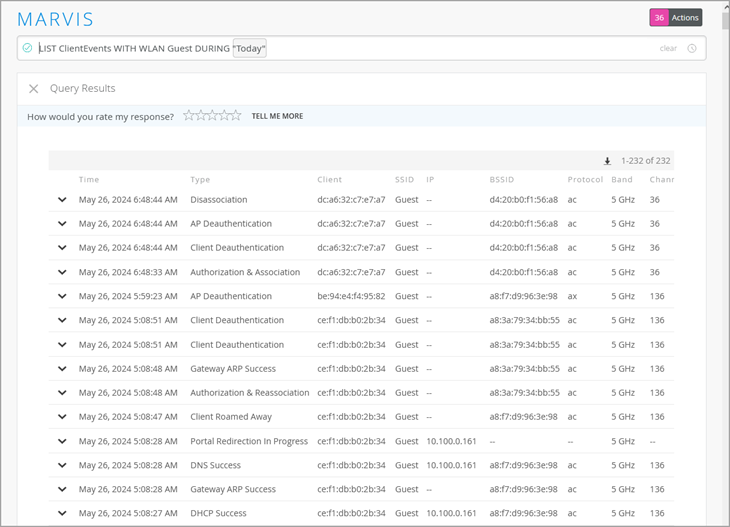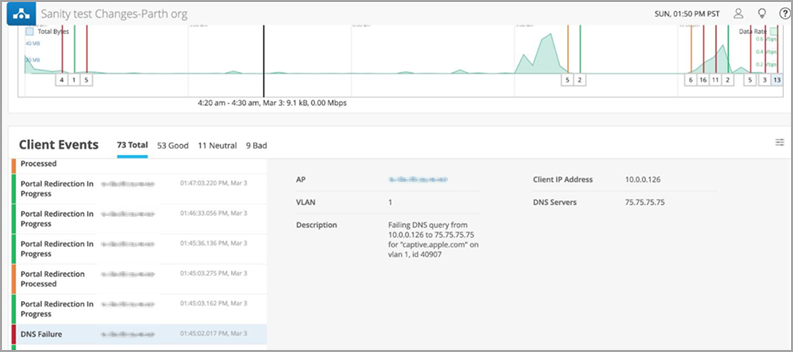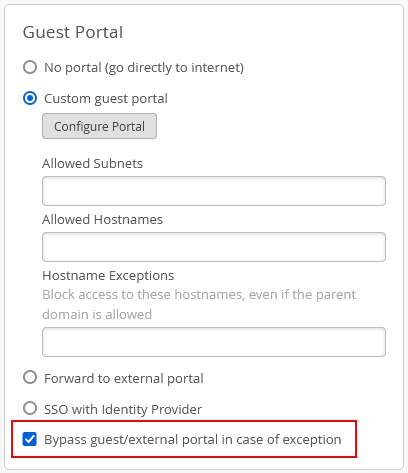- play_arrow Get Started
- play_arrow Access Points
- Overview of Juniper APs
- Juniper AP Ports and Their Usage
- PoE Requirements for Juniper APs
- play_arrow AP Dashboard
- play_arrow Onboarding
- play_arrow Configuration
- Auto-Provision Device Names, Sites, and Device Profiles
- BLE Settings
- Configure Ethernet Settings in a Device Profile
- Configure IP Settings
- Wireless Mesh Network Configuration
- Enable RTLS Support
- Electronic Shelf Labels
- Enabling LEDs on the AP
- Configure an AP for Survey Mode
- Configure Your APs as IEEE 802.1X Supplicants
- Enable Local Status Page
- Revert AP Configuration Automatically
- play_arrow Device Profiles
- Monitor and Manage Access Points
- Access Point FAQ
- play_arrow WLANs and WLAN Templates
- play_arrow Security
- Configure AP Threat Protection
- RSSI, Roaming, and Fast Roaming
- play_arrow RADIUS
- play_arrow Preshared Keys
- Rogue, Neighbor, and Honeypot Access Points
- play_arrow PCI DSS Compliance
- play_arrow WxLAN Access Policies
- Using WLAN Templates in a Device Profile
- Configure a WLAN Template
- Adding a WLAN
- WLAN Options
- Tips for Wi-Fi 6E (Video)
- Add a Bonjour Gateway to a WLAN
- Configure a Third-Party Tunnel
- Enable Geofencing
- Wi-Fi Data Rate Configuration
- DSCP Mapping
- WLAN Changes That Reset The Radio
- play_arrow Integrations
- play_arrow Radio Management
- play_arrow Wireless SLEs
- play_arrow Troubleshooting
- Using SLEs for Troubleshooting
- Wi-Fi Reason Codes
- play_arrow Troubleshooting an Access Point
- Replace an AP
- Reset an AP to the Factory-Default Configuration
- Troubleshooting Wireless Issues
- Common Wi-Fi Issues
- Dynamic and Manual Packet Captures
- Steer Clients to the 5-GHz Band
- Bonjour and Bluetooth Devices
- LLDP-MED Power Negotiation
- Troubleshoot Your Integration with Aruba ClearPass
- Use Labels to Identify "Unknown" Applications
- play_arrow Technology Reference
Troubleshoot a Guest Network That Doesn't Work
If your guest network isn't working, use this information to help identify the issues and address the root causes.
If your guest network is not working, you can use Marvis to identify the issues that are causing the problem. You can search for the client events associated with the guest WLAN by using the Ask a Question feature on the Marvis Actions page (Marvis > Marvis Actions).

Marvis can give a detailed description of all the events including the redirect URL, VLAN tag, AP BSSID. The redirect URL is shown in the case of an external portal. The following example shows events associated with a Mist guest portal.

You can find more details in the Client Events section under Client Insights for a failing client. Typically, if the issue is with DNS not being able to resolve the external portal redirect URL, you will see DNS failures under Client Events for the failing client. Also, if the DNS server is not able to resolve the URL after Mist successfully redirects the client to the URL, you will see a 'Portal redirection' event; but you will not see any 'Portal authorization' event.

If multiple clients report this issue, you will see a 'DNS server failing' warning on the Analytics > Events page.
For the event “Portal Redirection in Progress”, you can see the redirect URL link in the event details section. In case of an external portal, you can use the following link to verify and check if all the necessary information has been included: http://portal.mist.com/authorize-howto
If you see a portal redirection event in Client Insights but do not see any captive portal (CNA) pop-up on your device, enter an HTTP URL such as http://neverssl.com in a browser, provided that the client has an IP address. If you see redirection to the portal on your browser, you can use the guest authorization method and see a 'Portal Auth Success' event for the client.
Additionally, check if the AP has cloud connectivity or not. For guest authorization, the AP queries the cloud to get authorization information about the client. If the AP cannot establish a connection to the cloud, Guest authorization information regarding the client cannot be retrieved.
To tackle this scenario, select the Bypass portal in case of exception check box in the Guest Portal section on the New WLAN configuration page (Site > WLANs > Add WLAN) as shown below.





















